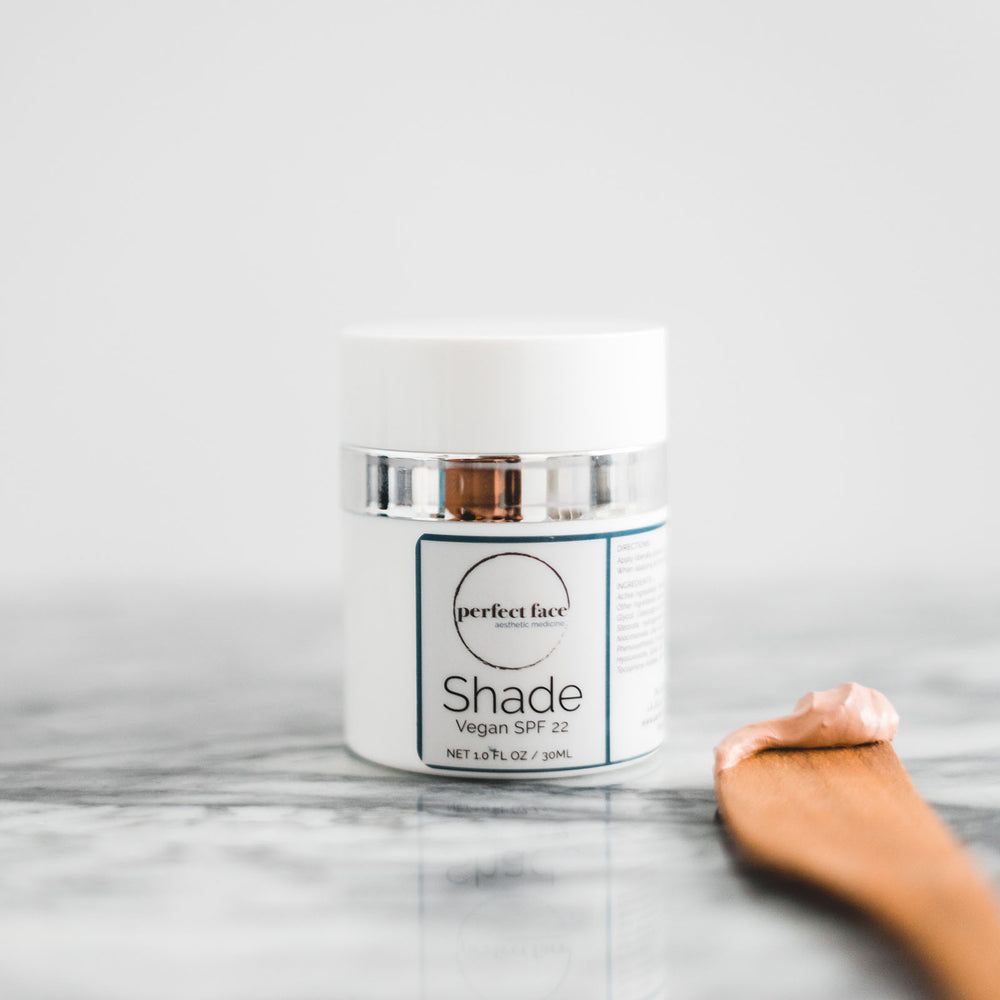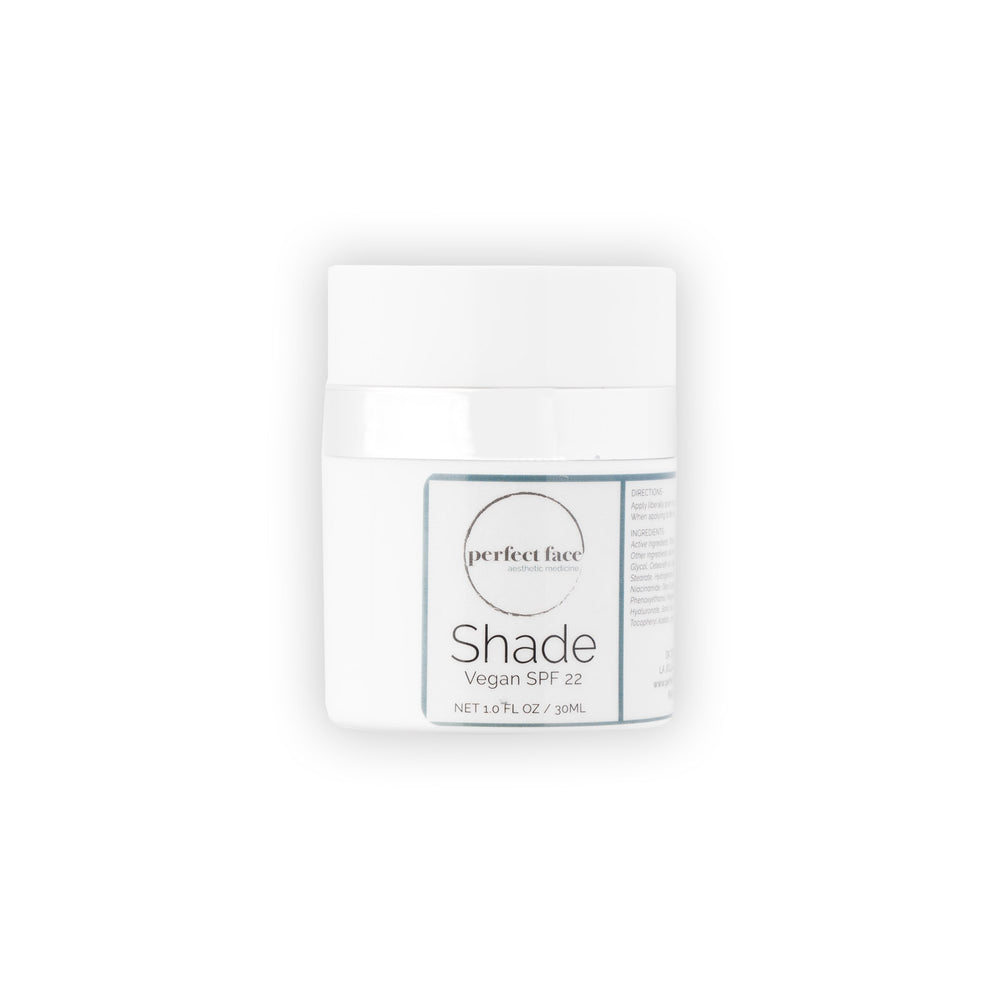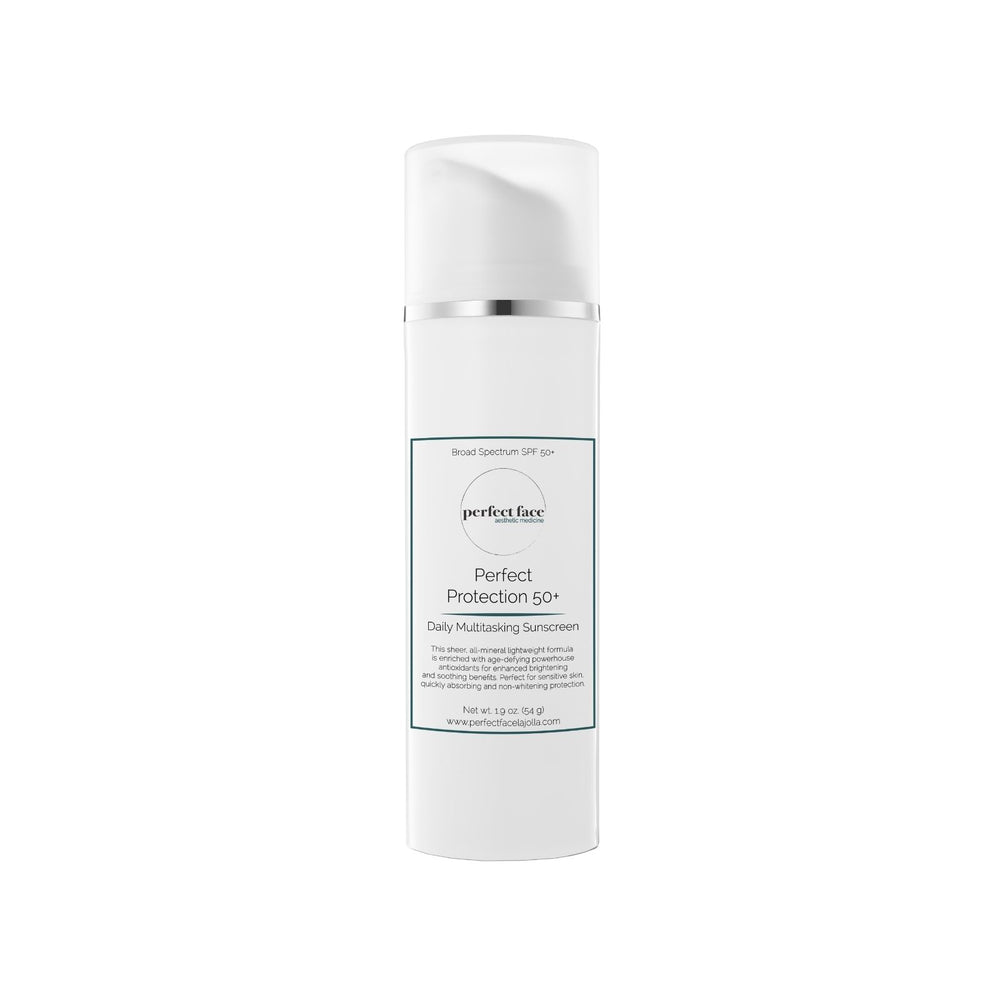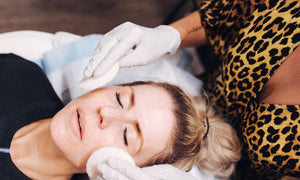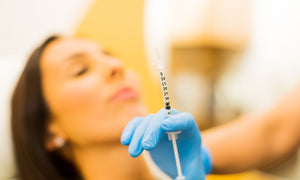Happy September, PFAMily!! We may be heading into fall soon enough, but that doesn’t mean sunscreen season is taking a backseat. In fact, every season is sunscreen season.
Why Sunscreen Should Be Part of Your Daily Regimen
The American Academy of Dermatology recently released a study that revealed that skin cancer is the most common cancer in the United States: one in five Americans will develop skin cancer in their lifetime, and one person dies from melanoma, the deadliest form of skin cancer, every hour.
The data is scary, but I promise there is also hope in the numbers.Exposure to the sun’s harmful UV rays is the most preventable risk factor for skin cancer. Research in the Journal of Clinical Oncology found that daily sunscreen may cut the risk of melanoma in half. That. Is. Huge.
Now, pass the sunscreen.
How Does Sunscreen Work?
Though there are dozens of brands and formulas, sunscreen ultimately falls into just two categories: chemical sunscreen and physical sunscreen.
While I can get into the nitty gritty of the science behind the categories, the American Academy of Dermatology breaks down how sunscreens work simply: physical sunscreen works as a shield, sitting on the surface of your skin deflecting the sun’s rays, while chemical sunscreen functions as a sponge absorbing the sun’s rays and turning it into heat.
If you read my first blog, you know that I will always opt for a physical sunscreen because of how that sunscreen works and for a few more reasons:
- Physical sunscreens don’t block pores and are great for acne-prone and sensitive skin like mine.
- Physical sunscreens take action the moment you apply, compared to the thirty minute delay associated with chemical sunscreens.
- Physical sunscreens prevent hyperpigmentation. Who doesn’t want an even skin tone?
- Chemical sunscreen ingredients like oxybenzone can harm coral reefs and the ocean. No, thank you.
The key to identifying a physical sunscreen is to look for the active mineral ingredients zinc oxide and/or titanium dioxide listed on the product.
There are two other qualities of a great sunscreen to look out for in understanding how sunscreens work: a broad-spectrum label and the SPF rating. Broad-spectrum sunscreens are important because they protect against bothUVA and UVB rays. UVA rays contribute to skin cancer and premature aging, while UVB rays are the main cause of burning and cancer. SPF numbers indicate how well a sunscreen shields unprotected skin from damage by these dangerous UVB rays. We want to stick in the SPF 30-90 range, which can block 97%-99% of rays. No sunscreen is 100% effective, but we aim to get as close as possible!
How Much Sunscreen to Use on Your Face?
So, now that you have your physical sunscreen, how do you use it?
Let’s walk through my best practices.
First things first, sunscreen should be applied daily, regardless of your skin tone. If you read the data above and are still unconvinced...let’s chat.
When you apply, use about a teaspoon of sunscreen on your face and about 2 oz (the size of a shot of liquor) on your body. I like to dot sunscreen on my face, rather than squeezing it into my hands before applying it. This helps the product absorb quicker and more evenly, preventing any random burns or areas of hyperpigmentation. Be sure to also apply product on or around the eyelids, where 5-10% of skin cancer occurs. Finally, don’t forget to layer on a SPF 15+ lip balm, so your entire face is protected.
If you’re using a physical sunscreen, you can apply and head straight into your day. If you’re using a chemical sunscreen, hang tight for at least 30 minutes before you venture outside or in sunlight.
How Often Should You Reapply Sunscreen?
Regardless of type, you will need to re-apply sunscreen every two hours, especially if you are spending time outdoors. Contrary to popular belief, SPF has no bearing on reapplication time.
If you are planning to sweat or swim, be sure to opt for a water-resistant product and re-apply sunscreen often than not. While water-resistant sunscreen is powerful at protection while you sweat and swim, it is not completely waterproof.
Lastly, use it or lose it! I recommend tossing the product after the “use-by” date. The sunscreen will lose its potency, and you’ll be increasingly more susceptible to the risks of sun damage.
When Sunscreen Use Should Begin
You’re never too young or too old to start a strict sunscreen regimen.
I believe in starting kids young with a smart sunscreen routine. Since children have thinner and more sensitive skin, begin with a patch test of hypoallergenic products before applying on a larger scale. I recommend physical sunscreen as a sun blocker for kids as opposed to chemical products which can seep into their thinner skin more easily. To protect my son’s little perfect face, I use the Surfer’s Barrier Stick by Avasol. I love Avasol because their products are 100% bio-based,and they do an incredible job of protecting and preventing. Arrow has never gotten even a little pink while wearing it.
My Sunscreen Picks for Sensitive Skin
My defense plan consists of two physical sunscreens: Shade and Perfect Protection, both of which are paraben and gluten-free and made with clean, potent ingredients.
Shade is my go-to daily sunscreen. The product’s ingredients mattify and decrease redness in my skin, lightly hydrate, promote tissue repair and improve makeup application. It’s the perfect primer to layer on before mineral makeup.
Perfect Protection is my product of choice if I find myself getting more sun than I anticipated. You know, like those days when you find yourself at the park with the kids and you left your hat at home. It not only protects skin, but the added green tea polyphenols help treat skin damage too. I always keep one in my car so I am never without it (and I use it on my hands too for protection while driving).
While physical sunscreens are typically associated with classic thick white lines you see on surfers’ noses, Shade and Perfect Protection were specially formulated to dry without the white glow that drives so many people away from physical sunscreen. It’s a win-win situation.
Here Comes the Sun
The majority of sun exposure these days is casual and incidental, meaning we get hit with it walking to lunch, driving and running errands. That’s why it’s more important than ever to proactively protect your skin against the daily grind.
Make SPF your BFF - no matter the time of the year.
Best,
Zoe

